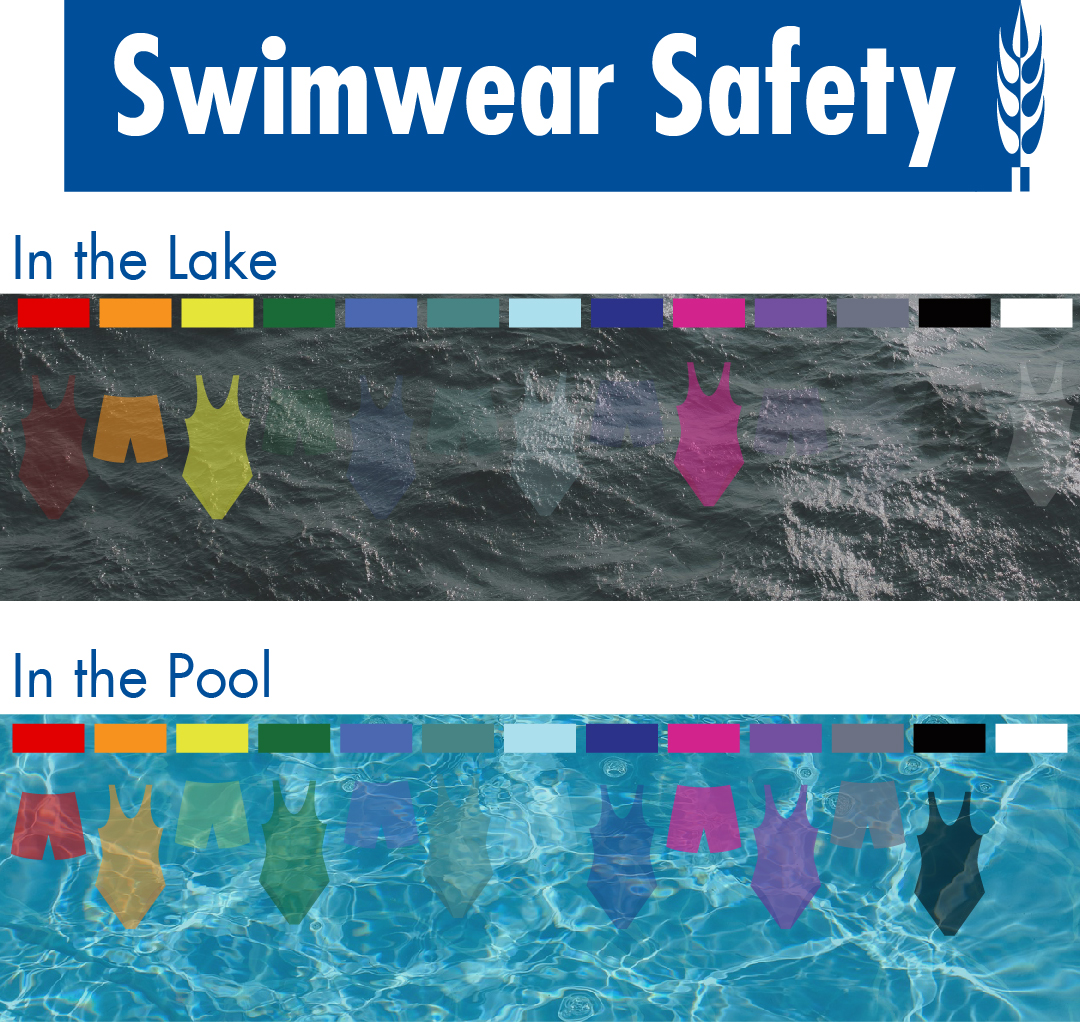The summer season has officially started meaning many of us are planning to take a refreshing dip or let the kids splash around in the cool water in the next few months. However, there are serious dangers, especially for children, in and around water.
Drowning is the leading cause of death in children 1-4 years of age and the 2nd leading cause in children 5-14 years old. Drowning can happen in seconds, to anyone, and is usually silent. As scary as it is, there are simple things you can do to keep your family safe this summer season.

Did you know, the color of your child's swimsuit can make a significant difference in what you can clearly see under the water?
Swimsuit Color Safety Tips:
- Neon colors, especially neon orange, are the most visible under water – either in a pool or open water
- Visibility is much better on the surface – encourage your children to stay in lifejackets or use floatation devices no matter how old or how good of a swimmer they are
- Think bright & contrasting – wear a color that contrasts the most with either the bottom of the pool, lake, river, or ocean
- Adult supervision is the most effective way to keep children safe in the water
Additional Swimming Safety Tips from the Center for Disease Control & Prevention (CDC):
- Make sure your children know how to swim
- Properly fence home swimming pools
- Wear properly fitting life jackets or floatation devices
- Assign one adult at a time to supervise children
- Avoid distractions if you are the adult responsible for children’s supervision
- Implement safety breaks to give children, and parental supervisors, time to rest
Even Non-Fatal Drowning Can Lead to Health Problems
For every child under age 18 who dies from drowning, another 7 receive emergency department care for non-fatal drowning. Nearly 40% of drownings treated in emergency departments require a hospital stay or transfer for further care. This is 3x higher than the number of other unintentional injuries that require follow-up care.
